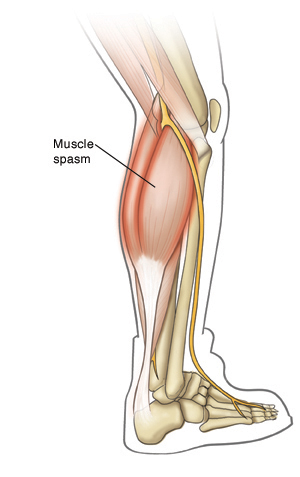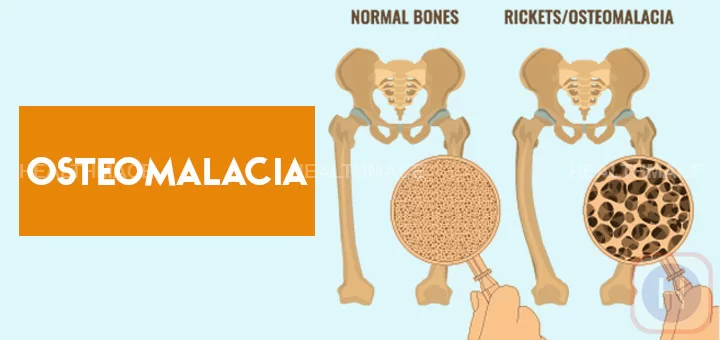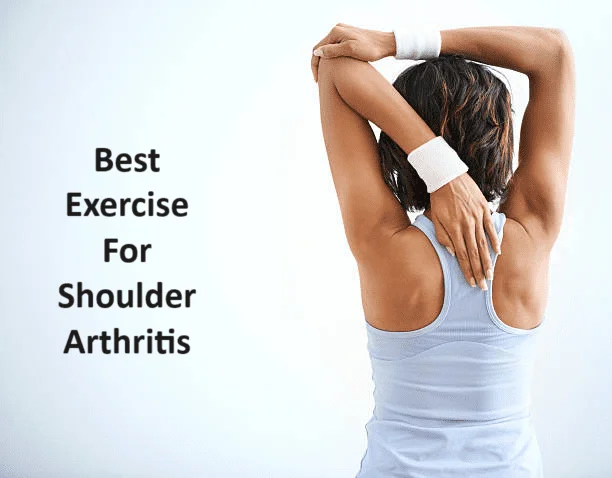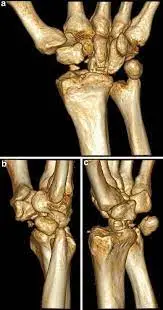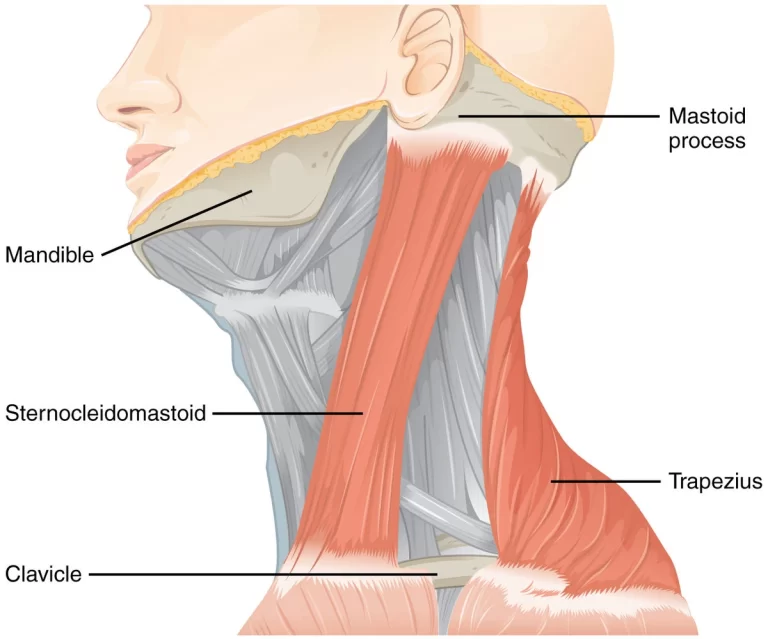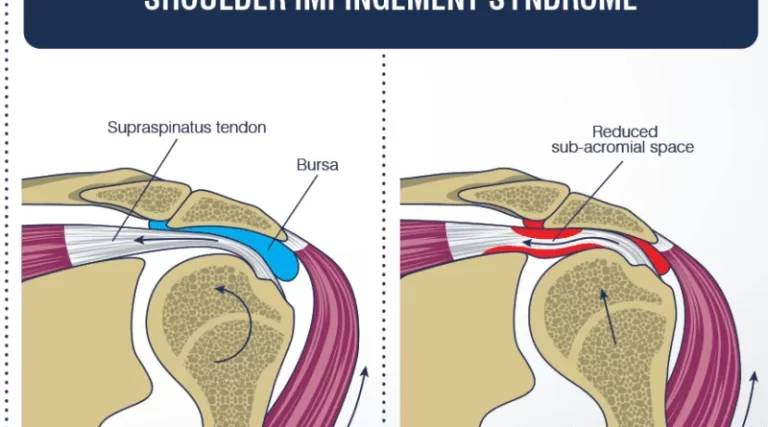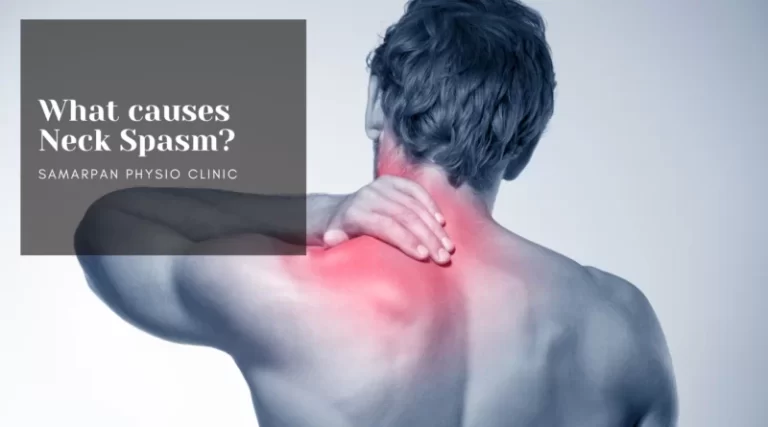Muscle spasm in the leg:
Muscle spasms in the leg are painful & involuntary muscle contractions that stay last seconds or minutes.
This muscle spasm is affect your sleep, exercise routine & general quality of life.
This leg muscle spasm occurs due to Sitting for long periods & overusing the muscles.
It is produced by pain & swelling in the muscle spasm.
When a muscle spasm occurs try flexing the muscle & applying heat or ice & massaging the area.
This muscle spasm is released by physiotherapy treatment & RICE principle.
Table of Contents
What is a leg spasm?
- Leg spasms are sudden, involuntary & intense muscle pain that is usually felt in your calf, foot & thigh area.
- It is also known as a “charley horse.”
- Sometimes this leg muscle spasm is lead to tightening uncontrollably.
- It is so difficult to live with muscle spasms & it is generally harmless.
What are the causes of leg spasms?
- When you do not do enough stretching.
- When the muscle is become fatigued due to overuse.
- If you feel dehydration.
- Lack of electrolytes in the body.
- If occur to involuntary nerve discharges.
- Restriction of the blood supply.
- When you do too much high-intensity exercise.
- In pregnant women, most occur to leg spasms due to heaviness in the leg.
- Some positions also lead to muscle spasms including:
- When you sit for long periods.
- If you stay in longtime in standing position & working on concrete floors.
- If you do sitting position improperly.
- Other causes which are also lead to muscle spasms include :
- Strain & sprains of any leg muscle
- Trauma
- Shin splints
- Tendonitis
Sometimes leg muscle spasms lead to some serious conditions including:
- ALS = amyotrophic lateral sclerosis or Lou Gehrig’s disease = it is a progressive neuromuscular disease.
- Cardiovascular disease = some heart conditions which are caused by blood clots & diseased blood vessels.
- Cirrhosis of the liver = Scarring of the liver.
- Coronary artery disease = occurs when narrowing or blockage of the coronary arteries.
- Diabetes = is a disease that prevents your body from properly using the energy from the food which are you eat.
- Hypokalemia = Low potassium levels in your blood.
- Flat feet = in this condition absence of the supportive arch in the foot.
- Kidney failure – hemodialysis = the condition in which one or both kidneys no longer work correctly.
- Osteoarthritis – degenerative joint disease = The corrosion of the cartilage which protects your bones.
- Lumbar canal stenosis = is the condition that occurs to the narrowing of the spinal canal in the lower back.
- Parkinson’s disease = is a neurological movement disorder.
- Peripheral artery disease = in this condition occurs to the narrowing of the arteries.
- Peripheral neuropathy = occurs to damage or dysfunction in one or more nerves.
What are the symptoms of the leg muscle spasm?
- You feel clenched & contracted muscles tightened into a knot.
- You also feel too severely uncomfortable & painful with even unbearable.
- You are observed to have tightness in the muscle with swelling.
- Also feeling of trigger & tender points in the muscle spasm.
- This muscle spasm is produced by pain in the area.
- You are also feeling difficulty in the movement of your leg.
- You feel numbness in the leg.
- Also, observe changes in the skin of your leg.
Who gets a leg spasm?
- In older age most commonly occur leg muscle spasms because your tendons become naturally shortened with age.
- In women more common than in men.
What is the Diagnosis of the leg muscle spasm?
It becomes too challenging for any health care provider the cause of leg spasms.
- First, the doctor takes a full medical history.
- Sometimes physical examination & imaging scans of the lower back & spine is necessary.
- If the patient presents with other symptoms then the doctor is advised to explore whether & check whether the symptoms are related to the muscle spasms or not.
- Your doctor is also advised to X-ray for signs of arthritis & bone fracture.
- Also, advise an MRI or CT scan to gain a better look at the muscles & other soft tissues.
- These scans help to identify possible problems with the discs & with blood supply to the affected area.
In which condition do you need to contact a doctor as an emergency?
- Some causes of leg spasms are more serious than others causes so that need to contact your doctor when :
- If your leg spasm is the result of an injury & a fall
- If due to this spasm develops into numbness in the lower limbs.
- When you feel trouble & difficulty in moving your limbs.
- If your leg spasm symptoms become too difficult for sleeping & take part in normal activities.
What is the treatment for leg muscle spasms?
RICE principle:

When you feel pain in the leg muscle doctor is advised to RICE principle as home treatment or primary treatment.
- R – rest = When you feel muscle pain doctor is advice to you rest for sometimes form activities for release to muscle pain.
- I- ice = You are Applied to ice on the area of the pan for 20 minutes, release to swellings & muscle pain but always applied to the ice with the help of a towel between the skin & ice to prevent ice burn, you can also be used to ice pack & frozen peas for ice therapy.
- C- compression = You can also apply compression bandage release to muscle pain, and swelling.
- E- elevation = You must be elevated to the leg with the help of a pillow under the foot for release of muscle pain & swellings.
Pain medication:
- The doctor is advised to some medication including:
- A muscle relaxant = Carisoprodol
- A calcium-channel blocker drug = Diltiazem, Verapamil
- Orphenadrine drug = is used to release muscle spasms, and relieve pain & stiffness in muscles.
- Over-the-counter drug means nonsteroidal anti-inflammatory drugs = NSAIDs like ibuprofen (Advil, Motrin) & naproxen (Aleve)which help to reduce inflammation & relieve the pain of neck spasm.
- You can also apply pain-relieving gel & spray like volini gel & spray on the area of muscle pain release to muscle pain & swellings.
Moist heat:
- You are also applying moist heat to the affected area – the muscle spasm area which also helps with the recurring leg spasms. you are applying moist heat to the spasm area using a heating pad & a damp & warm cloth.
What is Physiotherapy treatment for leg muscle spasms?
When the muscle spasm is not relieved after the home treatment & pain medication then the doctor has advised physiotherapy treatment to release the muscle spasm.
Physiotherapy treatment is help you relieve pain, swelling, muscle spam & tightness of the muscle pain.
The physiotherapy treatment includes massage, electrotherapy treatment & exercise therapy.
Massage therapy:
- Massage therapy helps you relax, which is help calm your tight muscles & ease the pain from your neck spasm.
- You are applied gentle pressure on the stiff & tender points which is help you release tension from the constricted muscles, providing relief & restoring range of motion – ROM to your neck.
- This massage therapy also increases blood flow to the neck, which is applied to speed up healing by starting the nutrients & oxygen to damaged muscles.
- Massage is applied after 2 – 3 days of following the RICE principle when you feel to release of the pain.
- Massage is applied with the help of the oil & applied for 5 -10 minutes.
- Massage is applied 3 times per day at home.
Electrotherapy treatment :
After the RICE principle, pain medication & massage if the muscle pain is not relieved then used Electrotherapy treatment for released to muscle pain.
To relive the swellings, spams & pain therapist is advised to you electrotherapy treatment.
In electrotherapy, the treatment therapist is used to many machines.
- When the trigger & tender points are present therapists are advised & to apply US = ultrasound therapy for the release of muscle pain.
- This treatment is applied with the help of gel & applies for 5 to 10 minutes on the area of pain.
- This therapy helps you release pain & swelling.
- Reduce to pain therapist is applied to SWD = short wave diathermy on the area of pain.
- SWD = Short wave diathermy is hot therapy for release to spams on the area of pain.
- This therapy is applied for 10 minutes to the area of pain.
Exercise therapy for leg muscle spasm :
After following the RICE principle for 2- 3 days at home & primary treatment & the help of pain medication, you feel released from the muscle spasm.
When you feel too comfortable & release from your muscle spasm then the physiotherapist is advised to you exercise therapy reduce to muscle weakness & tightness.
because when occurring muscle spasm also leads to muscle weakness & tightness so the need to exercise therapy strengthens the muscle.
The exercise therapy for muscle pain includes Stretching & strengthening Exercises.
Stretching exercise helps to relieve muscle tightness as well as strengthening Exercise is help you relieve muscle weakness.
Stretching exercise:
After the follow of Electrotherapy for 2-3 days for release to muscle spasm by physiotherapist then the therapist is advised to stretch for release to muscle tightness.
This stretching is applied when your pain is released & when you feel comfortable.
- Standing Calf Stretch
- Hamstring Standing Stretch
- Sitting calf Stretch
- Sitting hamstring Stretch
- Quadriceps Stretch
- Inner & Outer Legs Stretch

Standing Calf Stretch:
- You are standing facing a wall with your arms extended at chest height & palms on the wall.
- First Place your right leg forward & flexing the knee joint with the left leg behind & straight leg.
- Must keep both feet firmly planted on the floor.
- Then without bending at the waist & lifting your heels lean forward & flexing your right knee joint so that your body moves toward the wall.
- Repeat this stretching on the other side.
- This stretching is repeated 3 times at 1 time & perform 3 times per day
Hamstring Standing Stretch:
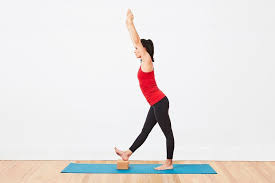
- First place the back of a chair against a wall.
- You stand in front of it & put your right heel on the chair so that your leg stays straight.
- Try to bend forward at the hip joint.
- Must be keeping your upper body straight & your left foot firmly on the floor.
- Repeat this stretching on the other side.
- This stretching is repeated 3 times at 1 time & perform 3 times per day
Sitting calf Stretch:
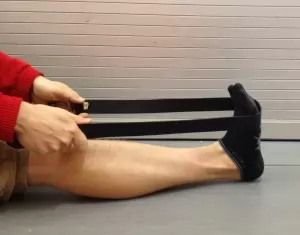
- You are in a sitting position on the ground with your legs straight out in front of her.
- First place a long towel & yoga strap around the balls of the feet.
- Must be Keep the back & knee joint straight then gently pull the towel & strap so that the toes are starting pointing toward the body.
- You are breathing naturally while holding the stretch for 30 seconds before releasing.
- This stretching is repeated 3 times at 1 time & perform 3 times per day
Sitting hamstring stretch:
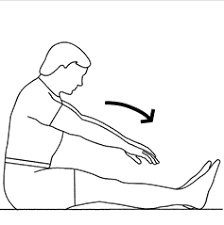
- You are sitting on the ground with both legs straight out in front of the body.
- Then bend at the waist& keep the chest open & back long.
- You are stretching forward & sliding the hands on the floor toward the feet.
- Hold this stretching for 30 seconds.
- This stretching is repeated 3 times at 1 time & perform 3 times per day.

Quadriceps Stretch:
- You are holding onto a wall & the chair for balance.
- You are standing on one leg & lift the opposite leg off the floor.
- Try to gently bend at the knee joint & pull the foot up close to the buttock.
- Hold this stretching for 30 seconds & repeat this stretch on the opposite leg.
- This stretching is repeated 3 times at 1 time & perform 3 times per day.
Inner & Outer Legs Stretch:
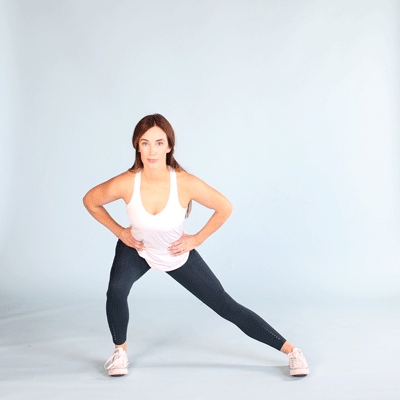
- Start this exercise with the feet facing forward & shoulder-width apart.
- Try to step out to lunge to the left & bending the knee joint to 90 degrees without allowing the knee to go past the toes.
- Then lower into the left side & straighten the right leg.
- With the back straight position & place the hands on the left thigh & hold this stretching position for 30 seconds.
- Then return to starting position & repeat on the opposite side.
- This stretching is repeated 3 times at 1 time & perform 3 times per day.
Strengthening Exercises:
After the follow of Electrotherapy & massage for 2 -3 days for release to muscle pain by physiotherapist then the therapist is advised to you strengthening exercise for release to muscle weakness.
This strengthening exercise is always advised when you feel to release pain & when you feel comfortable.
This all strengthening exercise helps to you muscle weakness & pain.
- Ankle Pumps
- Half squat
- Hamstring curl
- Leg extensions
- Straight leg raises
- Side leg raises
- Prone leg raises
- Single-leg squats
- Bridge with ball
- Single leg bridge
- Double knee to chest
- Clam-shells for outer hip muscles
- Abductors using a band
- Nordic curls for hamstrings
- Adductor side planks
Static Lunge:

- You are in a Standing position with all the muscles in the body tensed core tight tighten the abdomen muscles shoulders back up straight.
- Then Split & take the left leg back in a lunge, it is a starting position of this exercise.
- Try to lower the body into as deep a lunge without touching the bent knee joint to the ground.
- Hold this exercise for 10 seconds & return to the starting position.
- Do the 10 times in 1 session & perform 3 sessions per day.

Ankle Pumps:
- You are in the sitting & supine position on the floor with both legs extended.
- You are performing this exercise while sitting on a chair in the office & anywhere.
- Try to pull the toes towards yourself & point them away from you.
- Then push & pull the toes as far as in either direction as you can.
- Hold this exercise for 10 seconds.
- Do the 10 times in 1 session & perform 3 sessions per day.
Half squat:

- In the starting position, you are into a standing squat position with the feet shoulder-width apart.
- First, place the hands on the hip joint out in front of the body for balance.
- Try to look straight ahead then slowly squat down about 10 inches.
- This position is the halfway point to a full squat.
- Hold this exercise for 10 seconds.
- Do the 10 times in 1 session & perform 3 sessions per day.

Hamstring curl:
- You are in a standing position & facing a wall & use a chair for support.
- Place the feet should be hip-width apart.
- Try to lift one foot & bend the knee joint with a raise the heel toward the ceiling.
- Go as far as you can while keeping the upper body still & hip joint pointing forward.
- Hold this exercise for 10 seconds.
- Do the 10 times in 1 session & perform 3 sessions per day.
Leg extensions:

- You are in a sitting position in a chair.
- First, put the feet flat on the floor & hip-width apart.
- Try to look straight ahead, contract the thigh muscles & extend one leg as high as possible without raising the buttocks off the chair.
- Hold this exercise for 10 seconds.
- Do the 10 times in 1 session & perform 3 sessions per day.
Straight leg raises:

- You are lying down on the floor with one leg bent & one leg straight out in front of the body.
- First, contract the quadriceps muscle & straighten the leg.
- Try to slowly raise the leg up off the floor to the same height as the bent knee joint.
- Hold this exercise for 10 seconds, then return to the starting position
- Do the 10 times in 1 session & perform 3 sessions per day.
Side leg raises:

- You are lying on the side with the legs stacked on top of each other.
- Try to cradle the head in your hand & place the other hand on the floor in front of you.
- Raise the top leg as high as you can feel comfortable.
- Hold this exercise for 10 seconds, then return to the starting position
- Do the 10 times in 1 session & perform 3 sessions per day.
Prone leg raises:
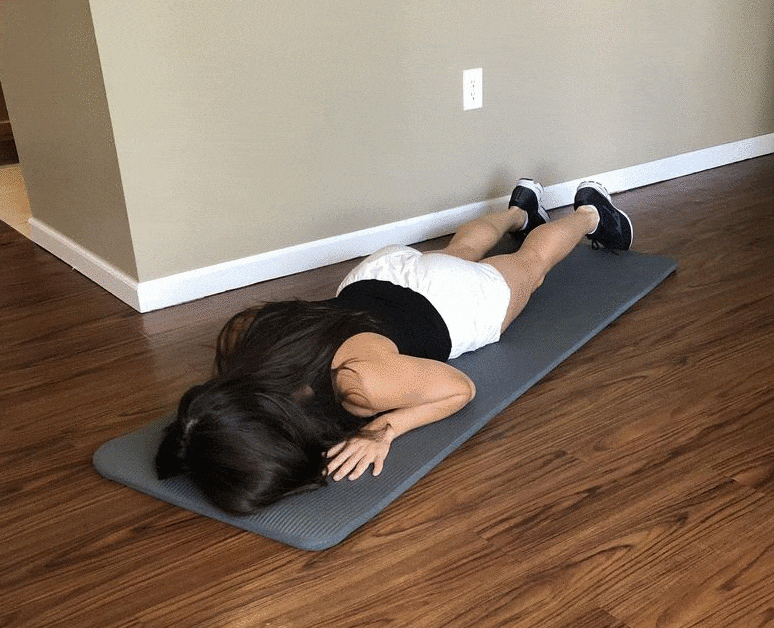
- You are lying on your stomach in means prone position with your legs straight out behind you.
- Then put your head to rest on the arms.
- First Engage the glute & hamstring muscles in the leg.
- Try to lift the leg as high as you can feel comfortable without feeling pain.
- Must Be sure to keep the pelvic bones on the floor throughout this exercise.
- Hold this exercise for 10 seconds, then return to the starting position
- Do the 10 times in 1 session & perform 3 sessions per day.
Single-leg squats:
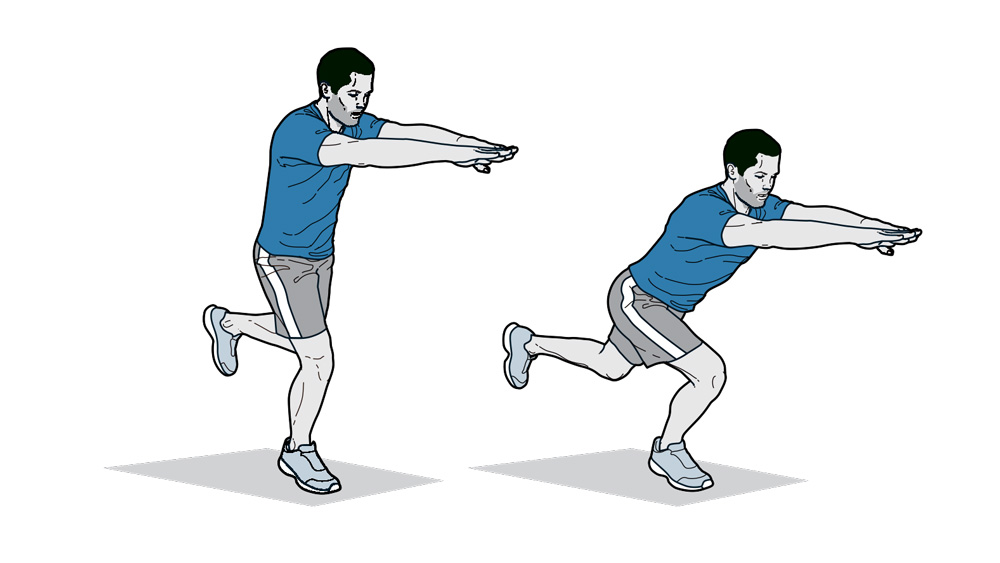
- This exercise is start in a standing position upright on one leg.
- Try to push the hip joint backward like you are going to try the sit-down.
- Then bend the knee joint into a single leg squat position.
- During exercise make sure to keep the knee joint aligned with the center of the foot.
- Hold this exercise for 10 seconds, then return to the starting position
- Do the 10 times in 1 session & perform 3 sessions per day.
Bridge with the ball:
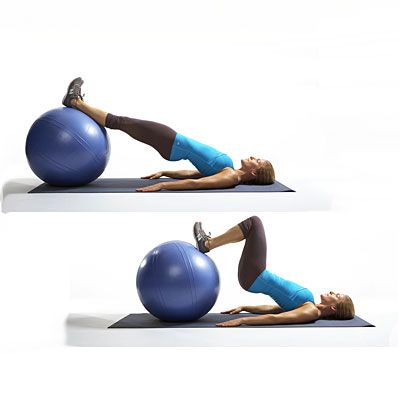
- You are lying down on the back with the knee joint bent & a ball/pillow between them.
- First, squeeze the gluteus muscle & contract the abdominal muscle to lift the hip joint off the ground.
- When you lift the hip joint must squeeze the ball between your both legs.
- Hold this exercise for 10 seconds, then return to the starting position
- Do the 10 times in 1 session & perform 3 sessions per day.
Single-Leg-Bridge:
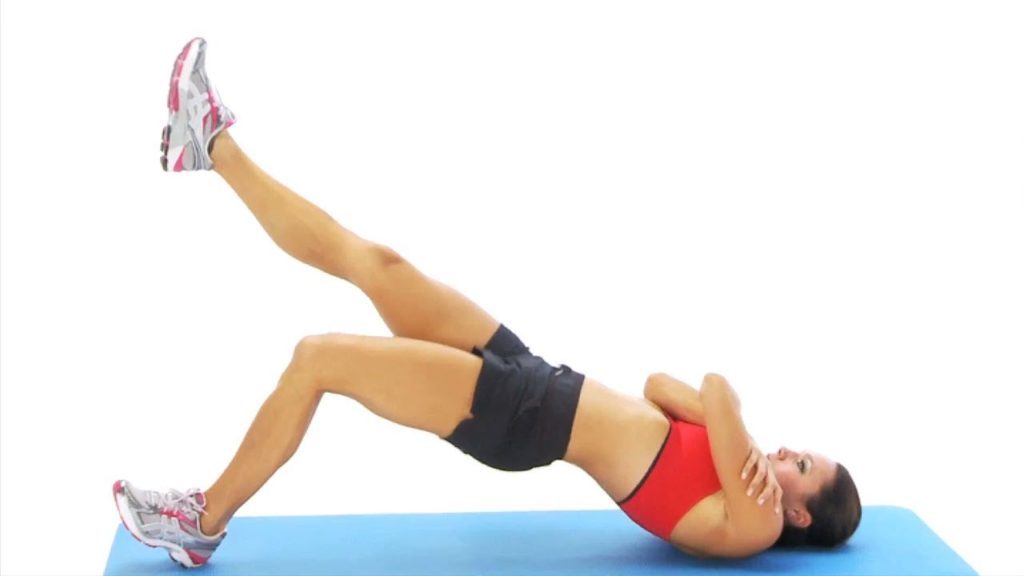
- You are lying down with both knee joints bent about 90° with an applied weight on the hip joint for increased resistance.
- Try to lift one leg & push the hip joint upward by squeezing the glutes muscle & lower it slowly.
- During this exercise make sure that you are not arching the lower back.
- Hold this exercise for 10 seconds, then return to the starting position
- Do the 10 times in 1 session & perform 3 sessions per day.
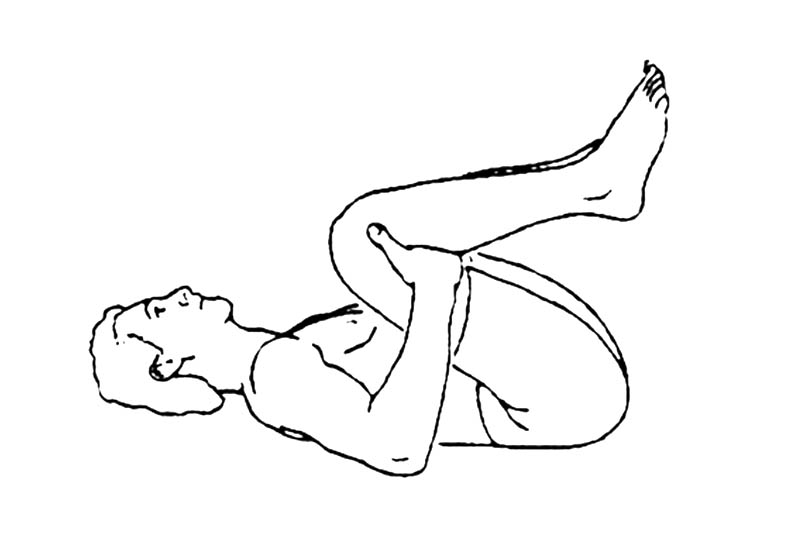
Double knee to chest:
- This exercise starts on the back with the legs outstretched.
- Bring both knee joints up together & place the hands below the knee joint area on the top of the shin.
- The alternative place for the hands in the back of the thighs.
- Try to slowly bring the knee joint toward the chest, then hold this exercise for ten seconds,
- Hold this exercise for 10 seconds, then return to the starting position
- Do the 10 times in 1 session & perform 3 sessions per day.
Clam-shells for outer hip muscles:
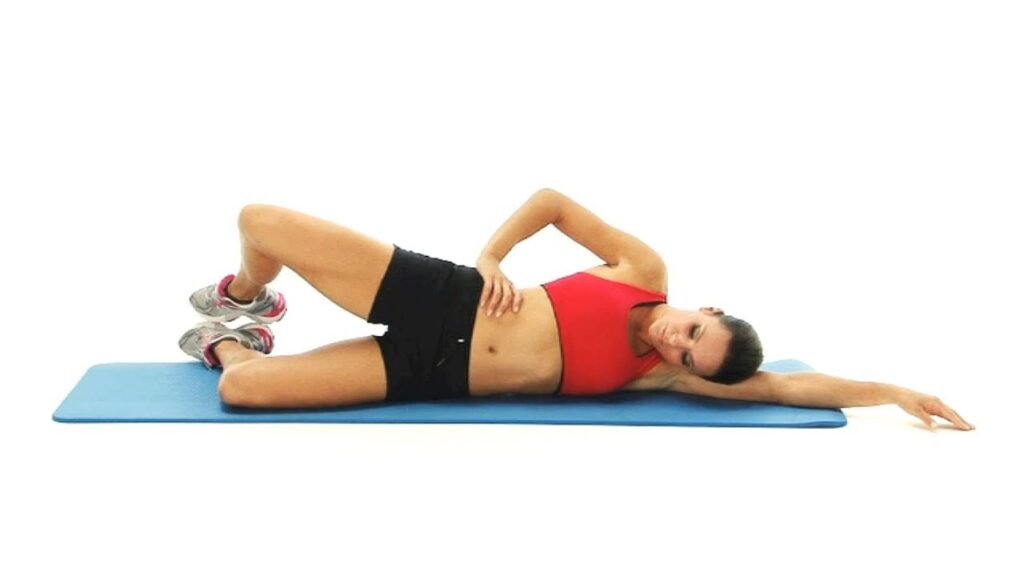
- You are laying on the side with a band around the thighs, just above the knee joint.
- Do the hip joint flex slightly & head supported.
- Must be Keep the feet together & open the top knee joint & externally rotate the hip joint.
- Hold this exercise for 10 seconds, then return to the starting position
- Do the 10 times in 1 session & perform 3 sessions per day.
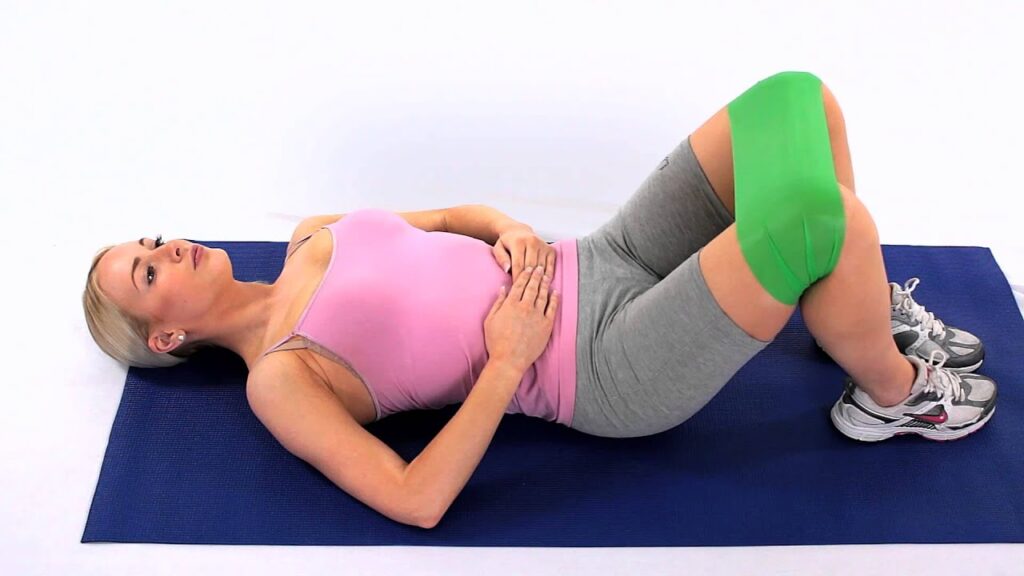
Abductors using a band:
- You are laying down on the back with the knee joint bent & a ball or pillow between them.
- First Squeeze the gluteus muscle & contract the abdominal muscle to lift the hip joint off the ground.
- with the lift & squeeze the ball between the legs.
- Hold this exercise for 10 seconds, then return to the starting position
- Do the 10 times in 1 session & perform 3 sessions per day.
Nordic curls for hamstrings:
- The first Anchor the feet under something heavy & have a partner hold them.
- First, put a towel under the knee joint & do the exercise on a mat.
- You must Keep the thighs & the trunk in a straight line as much as possible.
- Then hinge only at the knee joint to lower as much as possible then come back up.
- Hold this exercise for 10 seconds, then return to the starting position
- Do the 10 times in 1 session & perform 3 sessions per day.
Adductor side planks:
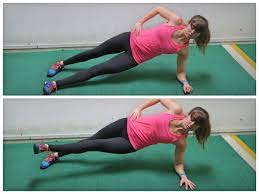
- You are on one elbow joint in starting position & forearm with the top leg on a chair & the knee joint straight & the bottom leg on the ground.
- Hold this position with the top leg & lift the bottom leg to meet the top leg.
- During exercise always take care not to rotate the pelvis & over the arch lower back.
- Hold this exercise for 10 seconds, then return to the starting position
- Do the 10 times in 1 session & perform 3 sessions per day.
How do prevent the leg muscle spasm?
- You must stay hydrated.
- And drink 6 to 8 glasses of water every day.
- Don’t drink as much alcohol & caffeine.
- Adjust your sleep.
- You must use pillows to keep your toes pointed upwards when you sleep on your back.
- When you lie on your front, try to hang your feet over the end of the bed.
- Both positions feel you in a relaxed position.
- Always gently stretch your leg muscles before exercise.
- Must be kept blankets & sheets loose around your feet so that your toes are not distorted.
- Always wear shoes which fill you well & support your feet.
- Medications & vitamins = you must take all vitamins & medications.
- Perform frequent leg exercises.
- You are preparing your bed space = must keep a heating pad & massage roller next to your bed.

